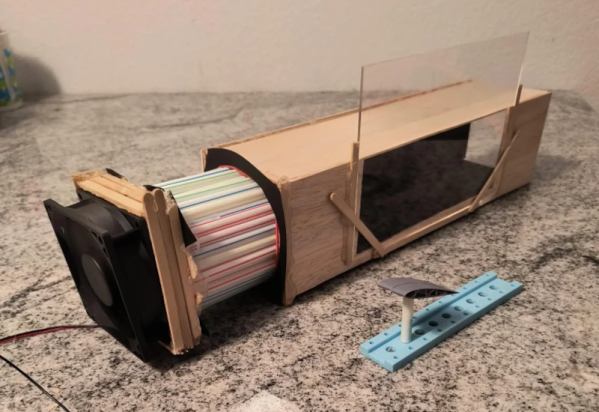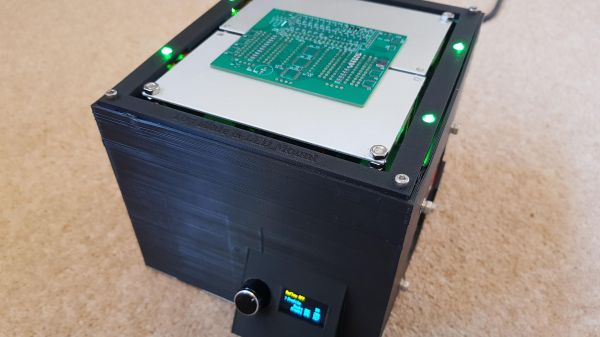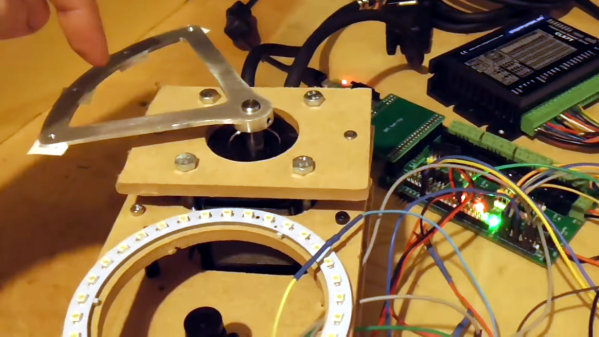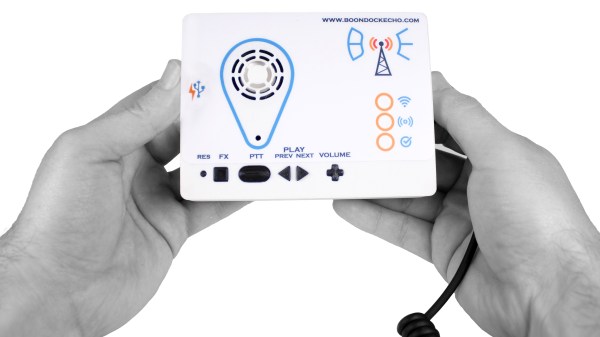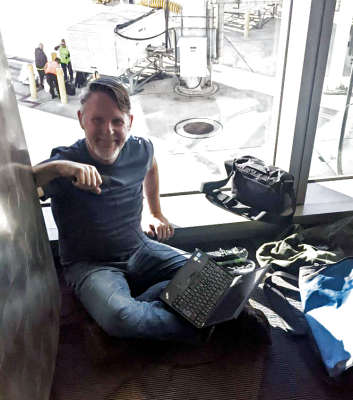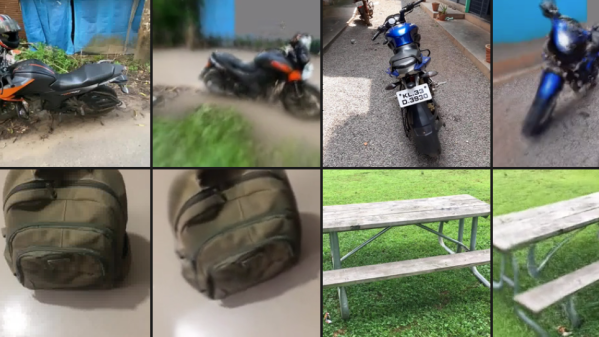Take a little time to watch the history of Radithor, a presentation by [Adam Blumenberg] into a quack medicine that was exactly what it said on the label: distilled water containing around 2 micrograms of radium in each bottle (yes, that’s a lot.) It’s fascinatingly well-researched, and goes into the technology and societal environment surrounding such a product, which helped play a starring role in the eventual Food, Drug, and Cosmetic Act of 1938. You can watch the whole presentation in the video, embedded below the break. Continue reading “Radioactive Water Was Once A (Horrifying) Health Fad”
Wind Tunnel Uses The Last Straw
If you watch the movies, there isn’t much to a wind tunnel. Just a fan and a tunnel, right? The truth is there’s a lot more to it than that, and [ejs13] shows you how you can make a small tunnel with some basic supplies. One of the requirements for a useful tunnel is to have laminar flow — that is, flow in uniform layers with little, if any, mixing. This tunnel achieves laminar flow using an array of soda straws to direct the flow. In fact, there are 150 straws in total. You can see a short clip of the wind tunnel in action below.
The rest of the parts are easy, too. A computer fan provides wind, and there’s a little bit of wood and acrylic. You’ll notice in the video that you can easily see the airflow. That’s thanks to a light source, some water, and a bit of dry ice.
Solder Two Boards At Once With This Dual Reflow Plate
Homebrew reflow projects generally follow a pretty simple formula: find a thrift shop toaster oven or hot plate, add a microcontroller and a means to turn the heating element on and off, and close the loop with a thermistor. Add a little code and you’re melting solder paste. Sometimes, though, a ground-up design works better, like this scalable reflow plate with all the bells and whistles.
Now, we don’t mean to hate on the many great reflow projects we’ve seen, of course. But [Michael Benn]’s build is pretty slick. The business end uses 400-watt positive temperature coefficient (PTC) heating elements from Amazon controlled by solid-state relays, although we have to note that we couldn’t find the equivalent parts on the Amazon US site, so that might be a problem. [Michael] also included mechanical temperature cutoffs for each plate, an essential safety feature in case of thermal runaway. The plates are mounted at the top of a 3D-printed case, which also has an angled enclosure for a two-color OLED display and a rotary encoder.
The software runs on an ESP32 and supports multiple temperature profiles for different solder pastes. The software also supports different profiles on the two plates, and even allows for physical expansion to a maximum of four heating plates, or even just a single plate if that’s what you need. The video below shows it going through its paces along with the final results. There’s also a video showing the internals if that’s more your style
We appreciate the fit and finish here, as well as the attention to safety. Can’t find those heating elements for your build? You might have to lose your appetite for waffles.
Continue reading “Solder Two Boards At Once With This Dual Reflow Plate”
OpenMV Promises “Flyby” Imaging Of Components For Pick And Place Project
[iforce2d] has an interesting video exploring whether the OpenMV H7 board is viable as a flyby camera for pick and place, able to quickly snap a shot of a moving part instead of requiring the part to be held still in front of the camera. The answer seems to be yes!
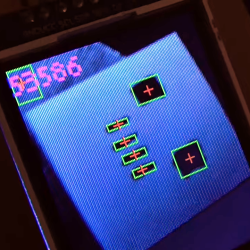
The H7 is OpenMV‘s most recent device, and it supports a variety of useful add-ons such as a global shutter camera sensor, which [iforce2d] is using here. OpenMV has some absolutely fantastic hardware, and is able to snap the image, do blob detection (and other image processing), display on a small LCD, and send all the relevant data over the UART as well as accept commands on what to look for, all in one neat package.
It used to be that global shutter cameras were pretty specialized pieces of equipment, but they’re much more common now. There’s even a Raspberry Pi global shutter camera module, and it’s just so much nicer for machine vision applications.
Watch the test setup as [iforce2d] demonstrates and explains an early proof of concept. The metal fixture on the motor swings over the camera’s lens with a ring light for even illumination, and despite the moving object, the H7 gets an awfully nice image. Check it out in the video, embedded below.
Continue reading “OpenMV Promises “Flyby” Imaging Of Components For Pick And Place Project”
Hands On With Boondock Echo
Perhaps no words fill me with more dread than, “I hear there’s something going around.” In my experience, you hear this when some nasty bug has worked its way into the community and people start getting whatever it is. I’m always on my guard when I hear about something like this, especially when it’s something really unpleasant like norovirus. Forewarned is forearmed, after all.
Since I work from home and rarely get out, one of the principal ways I keep apprised of what’s going on with public health in my community is by listening to my scanner radio. I have the local fire rescue frequencies programmed in, and if “there’s something going around,” I usually find out about it there first; after a half-dozen or so calls for people complaining of nausea and vomiting, you get the idea it’s best to hunker down for a while.
I manage to stay reasonably well-informed in this way, but it’s not like I can listen to my scanner every minute of the day. That’s why I was really excited when my friend Mark Hughes started a project he called Boondock Echo, which aims to change the two-way radio communications user experience by enabling internet-backed recording and playback. It sounded like the perfect system for me — something that would let my scanner work for me, instead of the other way around. And so when Mark asked me to participate in the beta test, I jumped at the chance.
Hackaday Podcast 243: Supercon, Super Printing, And Super Gyros
With solder fumes from Supercon still in the air, Hackaday’s Elliot Williams and Al Williams met to compare notes about the conference talks, badge hacking, and more. Tom Nardi dropped by, too.
Did you miss Supercon? It isn’t quite the whole experience, but most of the talks are on our YouTube channel, with more coming in the weeks ahead. Check out the live tab for most of the ones up now. You can even watch the badge hacking celebration. We’ll be writing up more in the following weeks.
Al nailed What’s That Sound, as did many others, except Elliot. [Jacx] gets a T-shirt, and you get a chance to play again next week.
The hacks this week range from a pair of posts pertaining to poop — multi-color 3D printer poop, that is. We wondered if you could print rainbow filament instead of a purge tower. The Raspberry Pi 5 draws a lot of excess power when in standby. Turns out, thanks to the Internet, the easy fix for that is already in. Other hacks range from EMI test gear to portable antennas with excursions into AI, biomedical sensors, and retrocomputing.
In the Can’t Miss category, we discussed Maya Posch’s post, which could just as easily be titled: Everything You Ever Wanted to Know about CAT Cable (But Were Afraid to Ask). Last, but not least, you’ll hear about Lewin Day’s round up of exotic gyroscope technology, including some very cool laser pictures.
Check out the links below if you want to follow along, and as always, tell us what you think about this episode in the comments!
Download for listening or for a very long ringtone.
Continue reading “Hackaday Podcast 243: Supercon, Super Printing, And Super Gyros”
Synthesizing 360-degree Views From Single Source Images
ZeroNVS is one of those research projects that is rather more impressive than it may look at first glance. On one hand, the 3D reconstructions — we urge you to click that first link to see them — look a bit grainy and imperfect. But on the other hand, it was reconstructed using a single still image as an input.

How is this done? It’s NeRFs (neural radiance fields) which leverages machine learning, but with yet another new twist. Existing methods mainly focus on single objects and masked backgrounds, but a new approach makes this method applicable to a variety of complex, in-the-wild images without the need to train new models.
There are a ton of sample outputs on the project summary page that are worth a browse if you find this sort of thing at all interesting. Some of the 360 degree reconstructions look rough, some are impressive, and some are a bit amusing. For example indoor shots tend to reconstruct rooms that look good, but lack doorways.
There is a research paper for those seeking additional details and a GitHub repository for the code, but the implementation requires some significant hardware.


